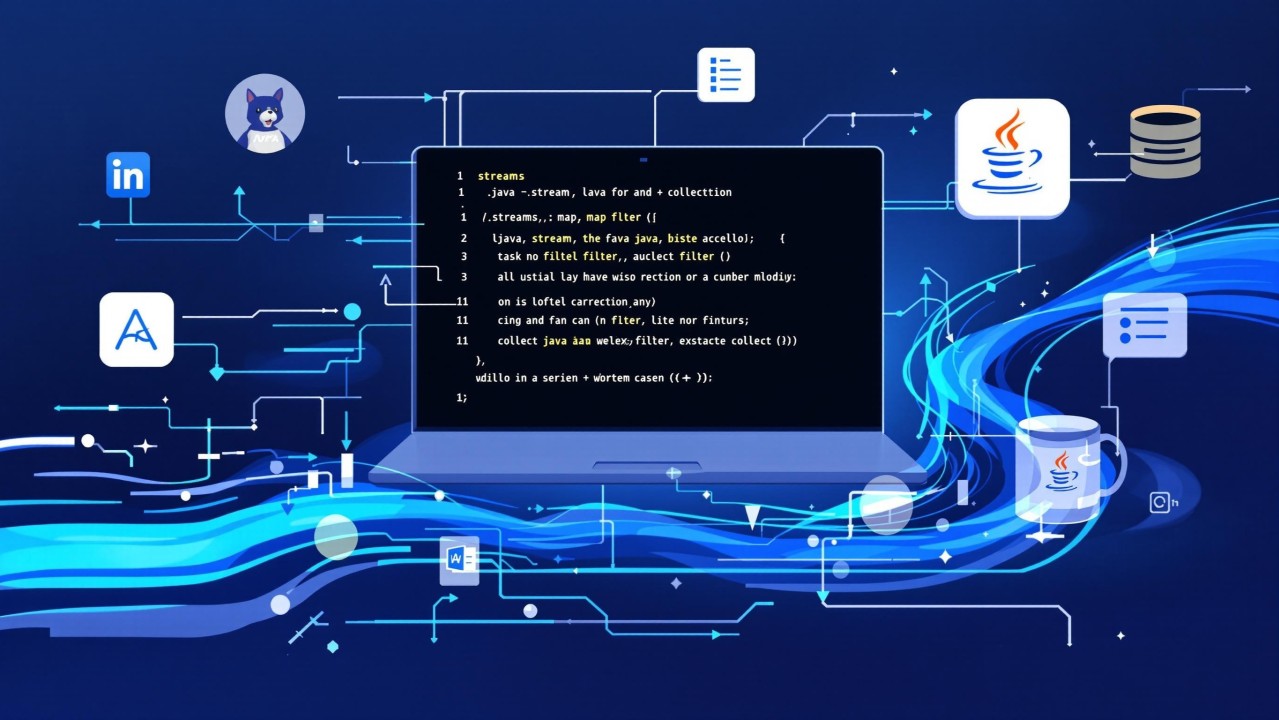
Harnessing Java Streams: Writing Clean, Efficient, and Modern Code
mushtak abdulqadir
Java Backend Developer Spring Boot Application Engineer Microservices Engineer (Java) Full Stack Java Developer
When Java 8 introduced Streams in 2014, it wasn't just adding another API—it was fundamentally changing how we think about data processing in Java. As someone who's spent years refactoring legacy codebases, I've seen firsthand how Streams can transform verbose, error-prone loops into concise, readable pipelines of operations.
Beyond Loops: The Stream Revolution
Traditional imperative programming forces developers to focus on how to perform operations—managing iterators, accumulating results, and handling temporary variables. Streams, however, let us describe what we want to accomplish, leaving the implementation details to the API. Consider this common task: finding the sum of all prices for premium products:
Streams turn complex loops into readable, maintainable pipelines that closely resemble the business requirement itself.
Core Concepts: The Building Blocks of Stream Processing
Understanding Streams requires familiarity with two types of operations:
Intermediate Operations create a new Stream without consuming the source Stream.
These are lazy operations—they don't execute until a terminal operation is called. Common examples include:
Terminal Operations consume the Stream and produce a result or side effect.
Examples include:
Three principles make Streams particularly powerful:
Why Streams Matter in Modern Java
Beyond syntactic sugar, Streams represent a paradigm shift that aligns with several trends in modern software development:
Declarative Over Imperative: By describing what we want rather than how to get it, code becomes more self-documenting. In one recent project, I reduced a 50-line data transformation loop to just 5 lines of Stream operations—and the business analyst could actually understand the code!
Functional Programming Integration: Streams work seamlessly with functional interfaces and lambdas, enabling composition of operations:
Parallel Processing: For CPU-intensive operations on large data sets, parallel streams can deliver significant performance improvements:
Common Pitfalls: When Streams Go Wrong
Despite their elegance, Streams aren't always the right tool:
Overcomplicating Simple Tasks:
Sometimes a plain loop is more readable. If you're struggling to express a simple operation as a Stream, that might be a sign to reconsider.
领英推荐
Misusing Stateful Operations in Parallel Streams:
Operations like sorted() and distinct() require maintaining state across the entire stream, potentially reducing parallelism benefits:
Ignoring Performance Trade-offs:
Streams involving primitive types might suffer from boxing/unboxing overhead. For performance-critical code, specialized primitive streams (IntStream, LongStream, DoubleStream) are preferable.
Best Practices: Streams Done Right
Choose the Right Tool: Use Streams for data transformation, filtering, and aggregation—not for every loop. They excel at operations that can be conceptualized as a pipeline.
Embrace Optional for Null Safety:
Master Collectors:
The Collectors utility class contains powerful methods for aggregating Stream results:
Real-World Example: Refactoring for Readability and Performance
Recently, I encountered this legacy code calculating order statistics:
The Stream-based refactoring:
While it's similar in length, the Stream version:
Conclusion: Strategic Stream Adoption
Streams are like assembly lines for data—they can dramatically improve productivity, but they're not appropriate for every task. The key is knowing when to use them strategically.
As you continue your Java journey, I encourage you to:
Remember that coding is communication—not just with the computer, but with other developers. Streams can make your intentions clearer, your code more maintainable, and your development more enjoyable.
What's your experience with Java Streams? Have you found them transformative, or are you still skeptical? Share your thoughts in the comments!